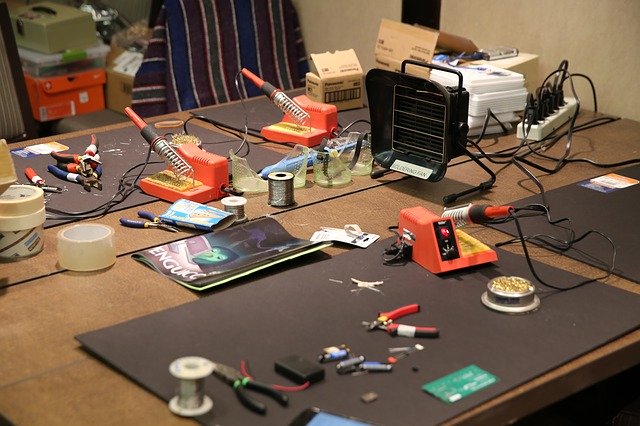A maker mindset can be cultivated in any environment. Before the construction of our new makerspace, we used the basement below the theater as our creative area. Before we had shiny new 3D printers and a laser cutter, the primary material used in the makerspace was cardboard (and still is). Makerspaces evolve in many ways, and ours stemmed from our shared philosophies around making, design thinking, engineering, coding, and robotics
No matter what materials you have readily available, you can teach with a maker mindset and instill that mindset in students. Here are four of the concepts that drive everything we do in our making.
Solution Diversity
In our makerspace, we have a chart of “true” STEM versus “flawed” STEM. In true STEM, there is solution diversity. Students can go through a project or lesson gaining the same skillset, but everyone’s project will look different. Our team shares a philosophy that our students should be able to be creative and make choices, even while they’re building the same skills.
In our 5th-grade science classes, for example, we had the students in the makerspace for two weeks making anemometers to measure and study wind speed. They went through the design thinking process and created anemometers that they tested and improved. Every student’s design was different, but they all developed the same skillset. Every student came out of the project with a better understanding of the content, but they just got there in different ways.
Bounded Autonomy
Another concept we like to incorporate into our STEM lesson-planning is bounded autonomy. In the anemometer project, for instance, we gave the students constraints such as designated size and limited materials, but we made it open-ended by giving them the freedom to choose how they meet the constraints. Supporting this intersection of bounded autonomy and solution diversity is why we use a robot like KIBO that literally provides a platform for students to build on.
For one activity, we placed KIBOs in the hands of our first graders, who were learning about Chinese New Year. After we read stories about the dragon dance and watched a video of the dance, our goal was for students to customize their robots and program them to dance, trying to make the KIBO imitate the dragon’s movements.
Even though we are fortunate enough to have one robot per student, we often have students work in partnerships or small groups to foster collaboration and communication skills.We used the laser cutter to make a pre-cut cardboard platform for each student. We then gave them the same set of supplies, including a paper cup, tissue paper, pipe cleaners, scissors, glue, and tape to customize their dragons. We Velcroed their platforms to the robot. Each student programmed their own dance by creating a sequence of KIBO’s forward, back, left, right, shake, and repeat blocks, then using the robot to scan the blocks and make their dragon dance. An added bonus was that each student was then able to keep their detachable creation. They couldn’t take the robots home, but they could take their dragon.
SEL Skills Integration
When students come to our makerspace, they are definitely going to learn specific maker skills like how to use tools and equipment, the design thinking process, and how to code, but we are also integrating social-emotional learning into our lesson plans. We design our units to intentionally create opportunities for our students to collaborate and communicate with one another. We create situations where students will develop self-awareness, self-management, and social awareness, and foster relationship skills and responsible decision-making.
Fo example, when introducing the KIBO robots to our 1st-graders, we talk about how they can work successfully in partners, from self-advocating by asking a friend for a turn to working together to scan the code blocks—one holding the robot to scan a block while the other covers the other blocks not being scanned.
Inspiring Reflection
Throughout our STEM activities, we ask students to reflect on specific elements: something new they learned, perhaps a challenge they had and what strategies they used to problem solve, what might they change in a design with more time or, is there something about which they still wonder. Encouraging reflection at the end of class can be as simple as asking, “How productive was your team? Thumbs up, thumbs down, thumbs in the middle.” Reflection is often a missing piece of STEM activity, but reviewing the process reinforces both the specific STEM lesson as well as the elements of the maker mindset that we strive to instill in all our students.
Megan Bounit is the head of academic technology and Kimberly Fogarty is the lead makerspace educator and academic technology integrationist at the Park School in Brookline, Massachusetts, where they use the KIBO robot in their makerspace.
_________________________________________________________________________________________________________________________________________________________________________________________________________________________
Like this article? Sign up for SmartBrief on EdTech to get news like this in your inbox, or check out all of SmartBrief’s education newsletters, covering career and technical education, educational leadership, math education and more.
